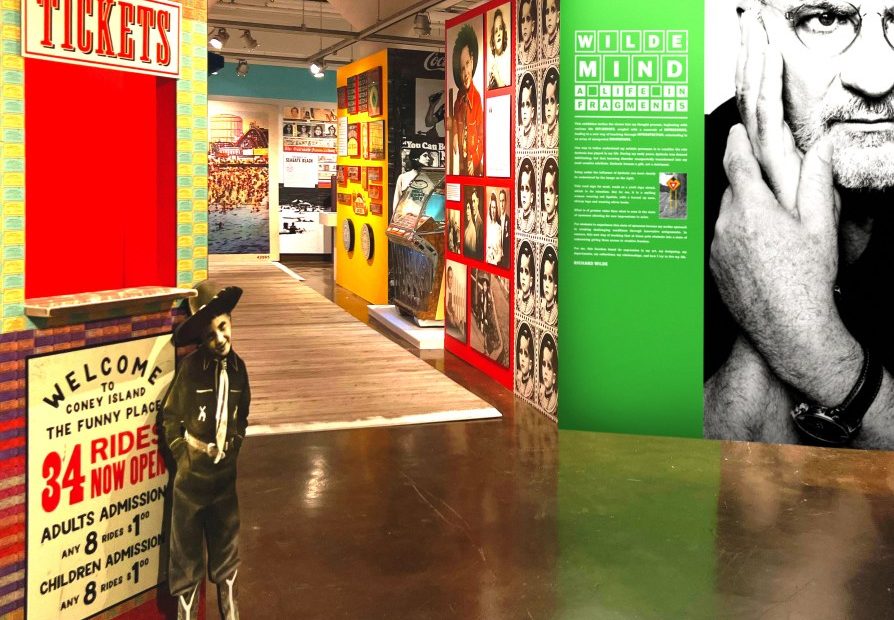Ten thousand design and advertising students have passed through Richard Wilde’s department at the School of Visual Arts in New York City, which has to be a record if there ever was one.
The feat was commemorated in 2009 with a book and exhibition rightly titled The Wilde Years: Four Decades of Shaping Visual Culture, a celebration of a fraction of the designers, art directors and creative professionals who graduated from the SVA BFA Advertising and Graphic Design department and did indeed shape the visual world.
Wilde did not retire until 2019, just before COVID hit. However, out of sight did not mean out of mind—and the current celebratory exhibit-as-carnival, Wilde Mind: A Life in Fragments (on view until Nov. 26), reveals a fraction of what influenced, inspired and veritably molded the life and work of this legendary chair emeritus.
The exhibit, designed by Kevin O’Callahgan, SVA’s master of 3D spectaculars, is a sensory barrage of stimuli, a memory map that guides us through Wilde’s mental labyrinth. It is not strictly a design show, but rather a playground filled with artifacts that vividly examine the obsessions that heretofore comprised his private domain.
Seeing the massive amount of stuff that fills the large SVA Chelsea Gallery, I wondered whether Wilde’s home was now bare. The answer was not at all surprising: “He packed 150 boxes for delivery to the gallery,” O’Callahgan told me, “but when I arrived to transport them, what remained looked as though nothing had been removed.”
The show must be seen to be believed. Each of the Chelsea Gallery’s four sub-sections represents a chapter of Wilde’s epoch, beginning with his childhood drawings and early memories in the private Sea Gate community near Coney Island where he came of age and was a devoted Brooklyn Dodgers fan. Wilde, whose parents were devout memorabilia collectors, amassed his own enormous array of items like brass doorknobs, beach passes, wooden rulers, heads of all shapes and sizes, antique cast-iron soldiers and more across his numerous curiosity cabinets.
The exhibit segues from the personal to the professional—not samples of design work, per se, but examples of his famous “visual literacy” exercises that he and his wife, Judith Wilde, conceived based on their merging of material and spiritual inspirations. Wilde’s focus has always been on creative problem-solving; his curriculum challenged students to visually express emotions, sounds and abstract concepts, often within strict compositional parameters—and inspired three textbooks (also on display).
Wandering through this open-gated community of Wilde’s mind, it is impossible to not feel the passion of someone who loved teaching others to create that he did it for 50 years. Wilde chaired and “curated” a demanding program using his wits, instinct and common sense, and this exhibit is full of wit, consumed by instinct, and the product of an ingenious mind that adapted to one of the brain’s cruel tricks: dyslexia.
On opening night I recalled and found an old interview where I asked him, “How has dyslexia affected your teaching and your practice?”
His response: “… during my formative years, I took in information differently than most students. This only became clear later on in life that the left-brained academic world was not equipped to educate me. So, because of this inability, I had to educate myself by inventing creative problem-solving methodology to bypass traditional ways of learning. Eventually I embraced academia and did so with an understanding of how this world systematically teaches right-brained individuals, which better enabled me to understand the modes of how to educate all students. In short, this deficiency proved to be a great help later on.”
This exhibition is the story of how he tricked the trickster inside his brain with his cunning Wilde Mind.
